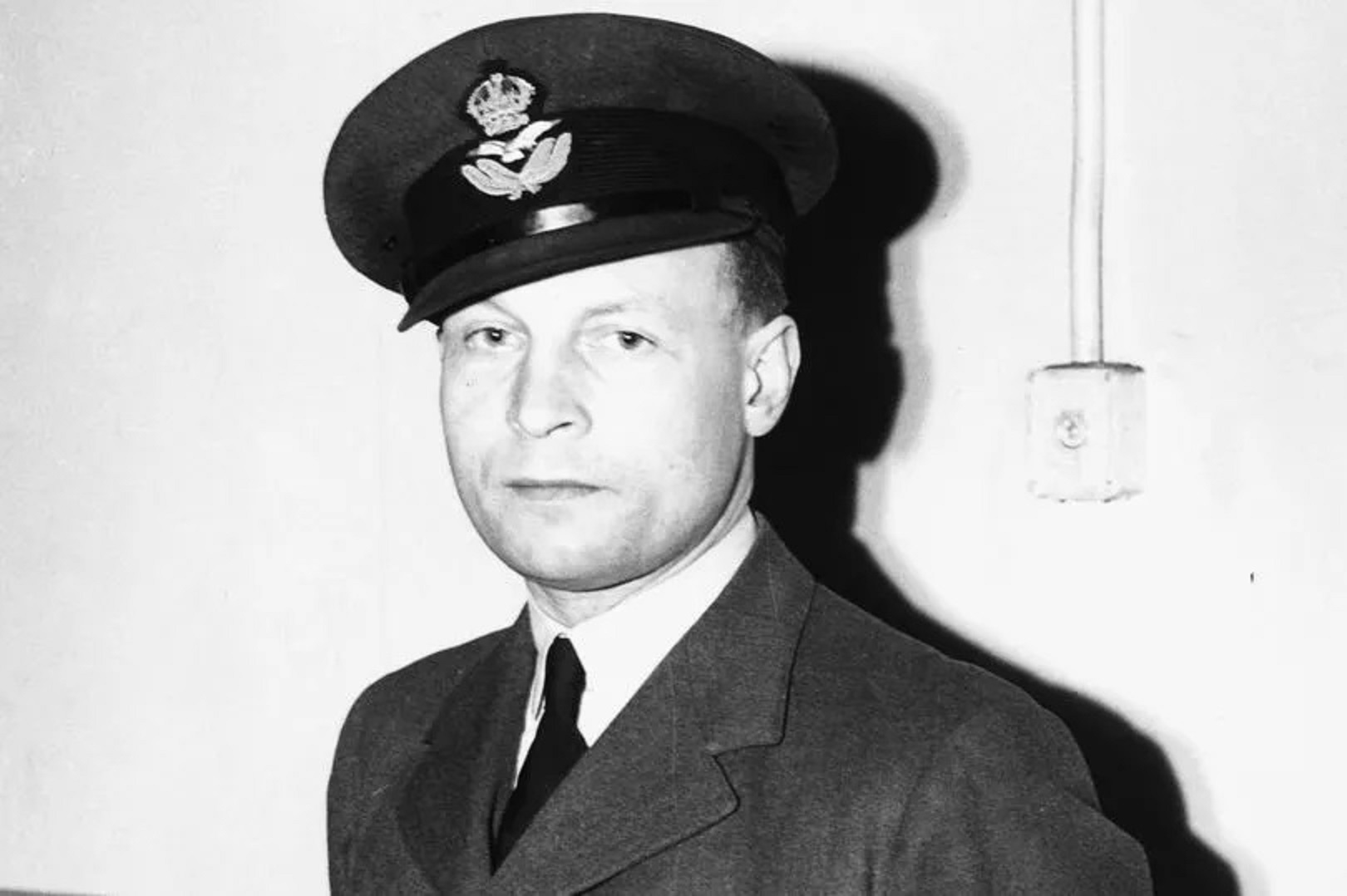RAF Wing Commander and SOE agent
Forest Frederick Edward Yeo-Thomas, also known as F. F. E. Yeo-Thomas, was born on June 17, 1902, in London, England. His parents were John Yeo Thomas, a coal merchant, and Daisy Ethel Thomas. Early in his life, his family moved to Dieppe, France, where he became fluent in both English and French.
At the young age of 16, Yeo-Thomas lied about his age to enlist in the US Army. He served as a dispatch rider on the Western Front in 1918 during the Word War I. After the war, he saw action in the Polish-Soviet War of 1919–1920, fighting alongside the Poles. During this time, he was captured by Soviet Russian forces and managed to escape execution by strangling a Soviet guard.
Between the wars, Yeo-Thomas held a number of jobs. He trained as an apprentice engineer with Rolls-Royce, then became an accountant for a firm of travel agents before joining Molyneux in 1932, a successful fashion-house in Paris, rising to become a director.
World War II
At the onset of World War II, Yeo-Thomas sought to enlist in the British Army but was rejected. He then tried to join the French Foreign Legion, but they were not recruiting Britons at the time. However, after offering his car for the use of the British Air Attaché in France, he was allowed to join the Royal Air Force (RAF) in September 1939.
Known as “Tommy” among his peers, Yeo-Thomas served as an agent for the British Special Operations Executive (SOE) during World War II. He was given the codenames “Seahorse” and “Shelley”, while the Gestapo referred to him as “The White Rabbit”. His operations were primarily focused in areas under German occupation and in Vichy France.
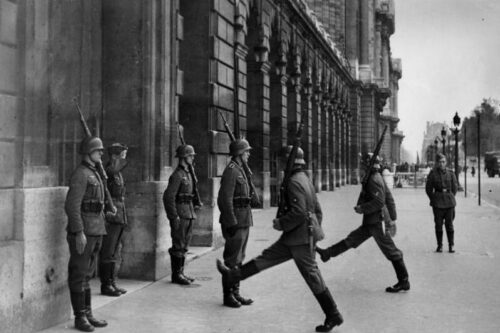
The SOE
The SOE also known as “The Baker Street Irregulars” and “The Ministry of Ungentlemanly Warfare”, was a clandestine organization established by the British during World War II in 1940. Its primary objectives were to carry out covert operations such as espionage, sabotage, and reconnaissance in Europe under Axis control and to support local resistance movements.
The SOE was active in all territories that were occupied or attacked by the Axis powers, with the exception of areas where Britain had agreed upon demarcation lines with its main Allies, namely the United States and the Soviet Union.
The organization had a workforce of over 13,000 individuals, of which approximately 3,200 were women. The SOE was disbanded in 1946. In recognition of those who served in the SOE, memorials were unveiled in 1996 at Westminster Abbey’s west cloister and in 2009 on the Albert Embankment in London.
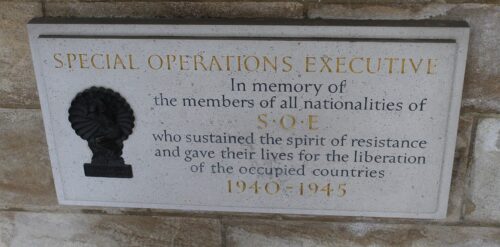
The SOE was the result of a merger of three secret departments that had been established just before the start of World War II. These departments operated with limited resources until the war broke out. Their activities often overlapped, leading them to agree on a general division of their responsibilities.
The SOE was renowned for the sabotage and subversion carried out by its agents behind enemy lines. Prime Minister Winston Churchill, a strong supporter of the SOE, famously commanded them to ‘set Europe ablaze!’.
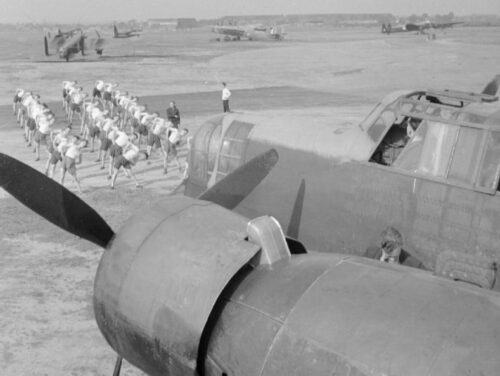
Capture & Escape
In 1944, during his third mission in France, Yeo-Thomas was betrayed and arrested at Passy metro station in Paris. He was repeatedly tortured by the Gestapo but never disclosed information about the resistance or his underground work. He was sent to a number of jails, then deported to Buchenwald concentration camp. In Buchenwald, Yeo-Thomas witnessed the execution of some of his fellow prisoners. Seizing an opportunity, he managed to switch his identity with that of a deceased French prisoner.
After assuming a new identity, Yeo-Thomas managed to survive as a hospital orderly. He was later moved to “Willie,” a sub-camp of Buchenwald located in Tröglitz/Rehmsdorf, Saxony-Anhalt. The prisoners there were primarily tasked with rebuilding a coal liquefaction plant, owned by the Brabag company, which had been destroyed in an Allied bombing raid. Within the confines of the camp, Yeo-Thomas began to organize resistance efforts and even made a short-lived escape. Upon his recapture, he successfully convinced his captors that he was a French national, leading to his transfer to a prisoner-of-war camp, Stalag XX-B, near Marienburg.
During his time in Buchenwald, Yeo-Thomas encountered Squadron Leader Phil Lamason, who was responsible for 168 Allied airmen also imprisoned there. Risking his own safety, Yeo-Thomas helped Lamason send a message out of the camp to the German Luftwaffe, informing them of the airmen’s captivity. This was a strategic move, as RAF prisoners of war were under the jurisdiction of the Luftwaffe, not the Gestapo.
Despite the extreme risks and the constant threat of recapture, Yeo-Thomas never ceased in his efforts to escape and resist his captors. In order to escape, Yeo-Thomas had to adopt various disguises and even resorted to shooting an enemy agent at point-blank range. His efforts eventually paid off when he managed to escape, guiding 10 French prisoners of war through German patrols to reach American lines in April 1945.
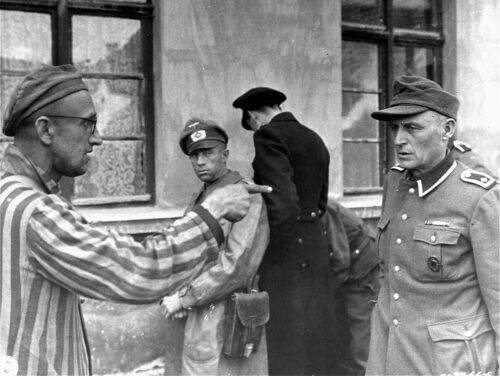
After the conclusion of the war, Yeo-Thomas played a crucial role as a witness at the Nuremberg trials, aiding in the identification of officials from Buchenwald. He served as a pivotal witness for the prosecution at the Buchenwald trial, which took place at Dachau Concentration Camp from April to August 1947. During this trial, 31 staff members from Buchenwald were found guilty of committing war crimes. The total number of deaths at Buchenwald is estimated at 56,545.
Yeo-Thomas unexpectedly testified as a defense witness in the war crimes trial of SS-Obersturmbannführer (lieutenant colonel) Otto Skorzeny. The specific charge against Skorzeny was his alleged use of American uniforms to infiltrate American lines. In his testimony, Yeo-Thomas confirmed that he and his fellow SOE operatives had worn German uniforms while operating behind enemy line.
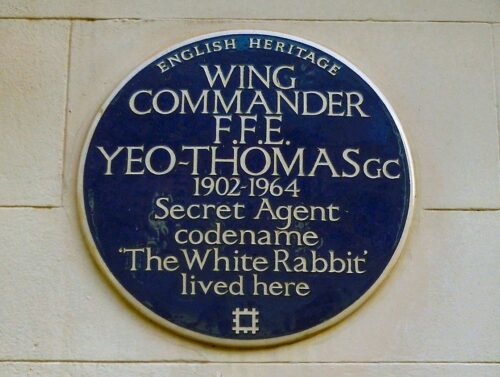
Yeo-Thomas & James Bond
Yeo-Thomas’s daring exploits as a secret agent during World War II, his code name “White Rabbit”, and his remarkable survival, have led historians to suggest that he was a significant inspiration for the character of James Bond.
A document discovered at the National Archives revealed that Fleming, who also worked in intelligence during the war, had been following Yeo-Thomas’s case. Despite working in different units, this is the first time a connection has been established between them.
In addition to this, there are striking similarities between the characters of Yeo-Thomas and Bond, as well as parallels between the real-life experiences of Yeo-Thomas and the adventures portrayed in the James Bond novels. This further supports the idea that Fleming’s creation of the Bond character was influenced by the real-life agent.
Legacy
Yeo-Thomas was one of the most highly decorated SOE agents World War II. He was the first secret agent of the World War II to receive the George Cross (GC). He was also awarded the Military Cross (MC) and Bar, Legion of Honour (France), Croix de guerre (France) and Cross of Merit (Poland). His exploits as a secret agent put fictional heroes to shame. His bravery and sheer physical resilience were remarkable. Forest Frederic Edward Yeo-Thomas passed away on February 26, 1964, in Paris, France.
*The views and opinions expressed on this website are solely those of the original authors and contributors. These views and opinions do not necessarily represent those of Spotter Up Magazine, the administrative staff, and/or any/all contributors to this site.

